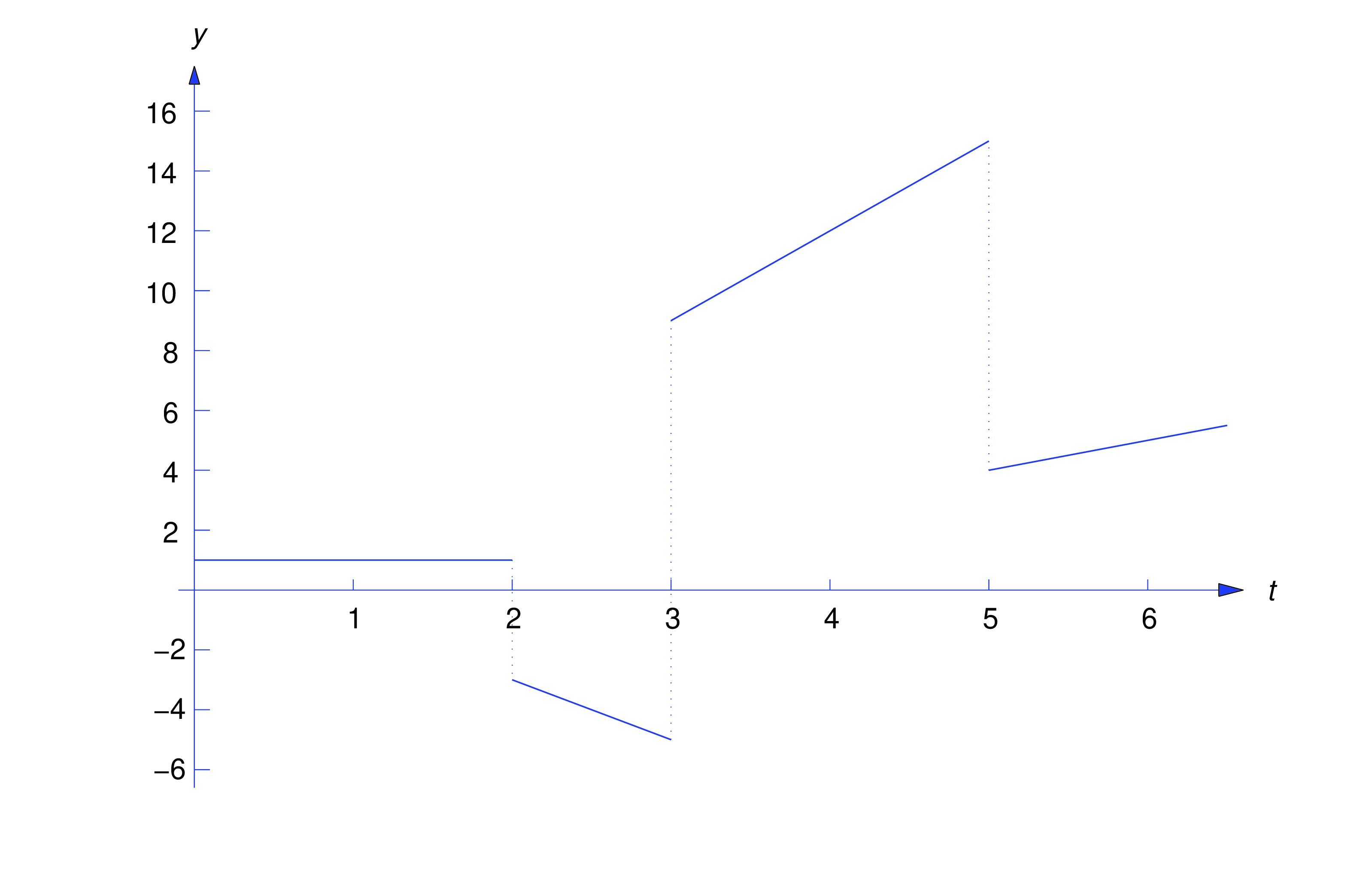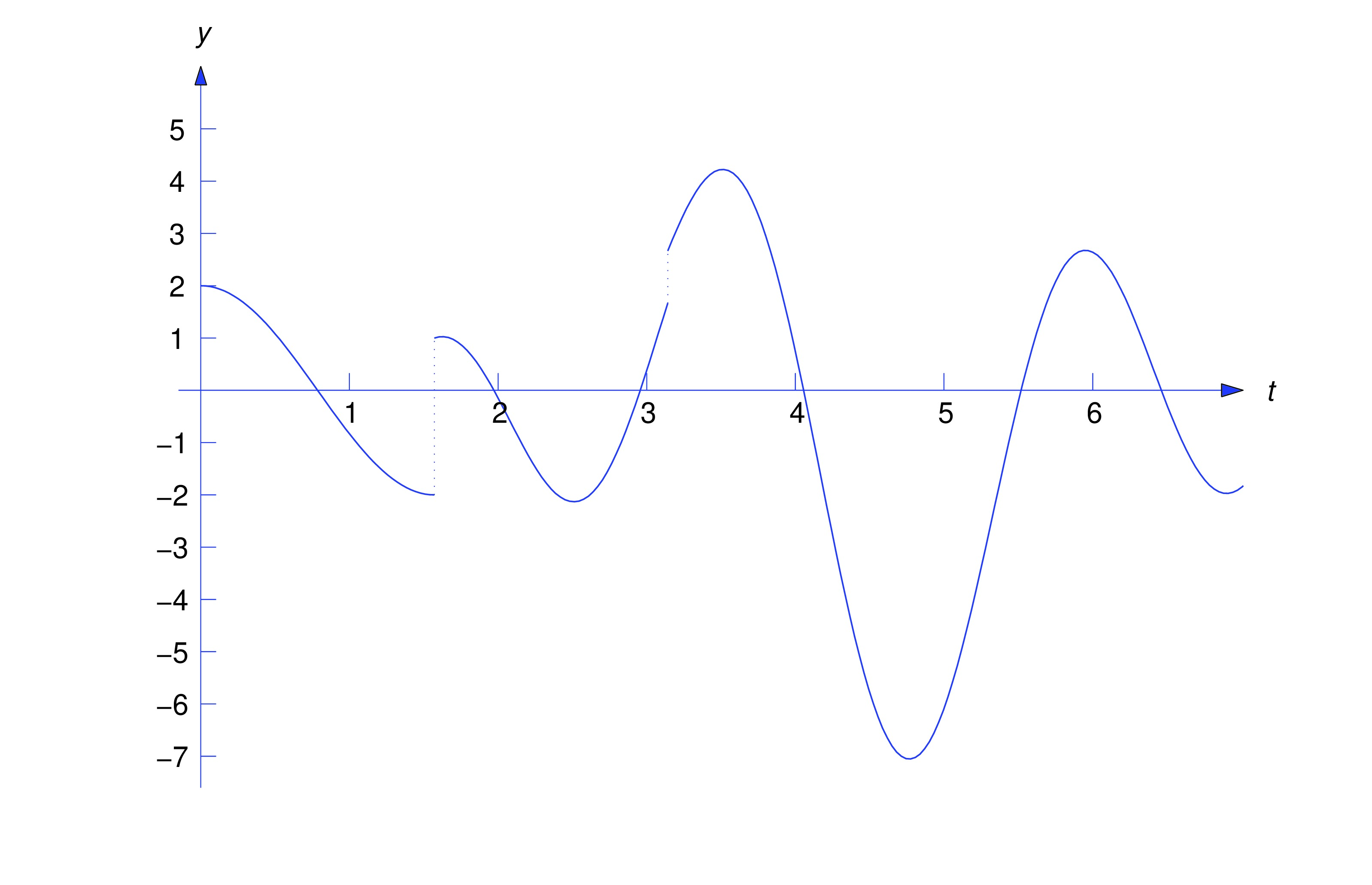We introduce the unit step function and some of its applications.
The Unit Step Function
In the next section we’ll consider initial value problems where , , and are constants and is piecewise continuous. In this section we’ll develop procedures for using the table of Laplace transforms to find Laplace transforms of piecewise continuous functions, and to find the piecewise continuous inverses of Laplace transforms.
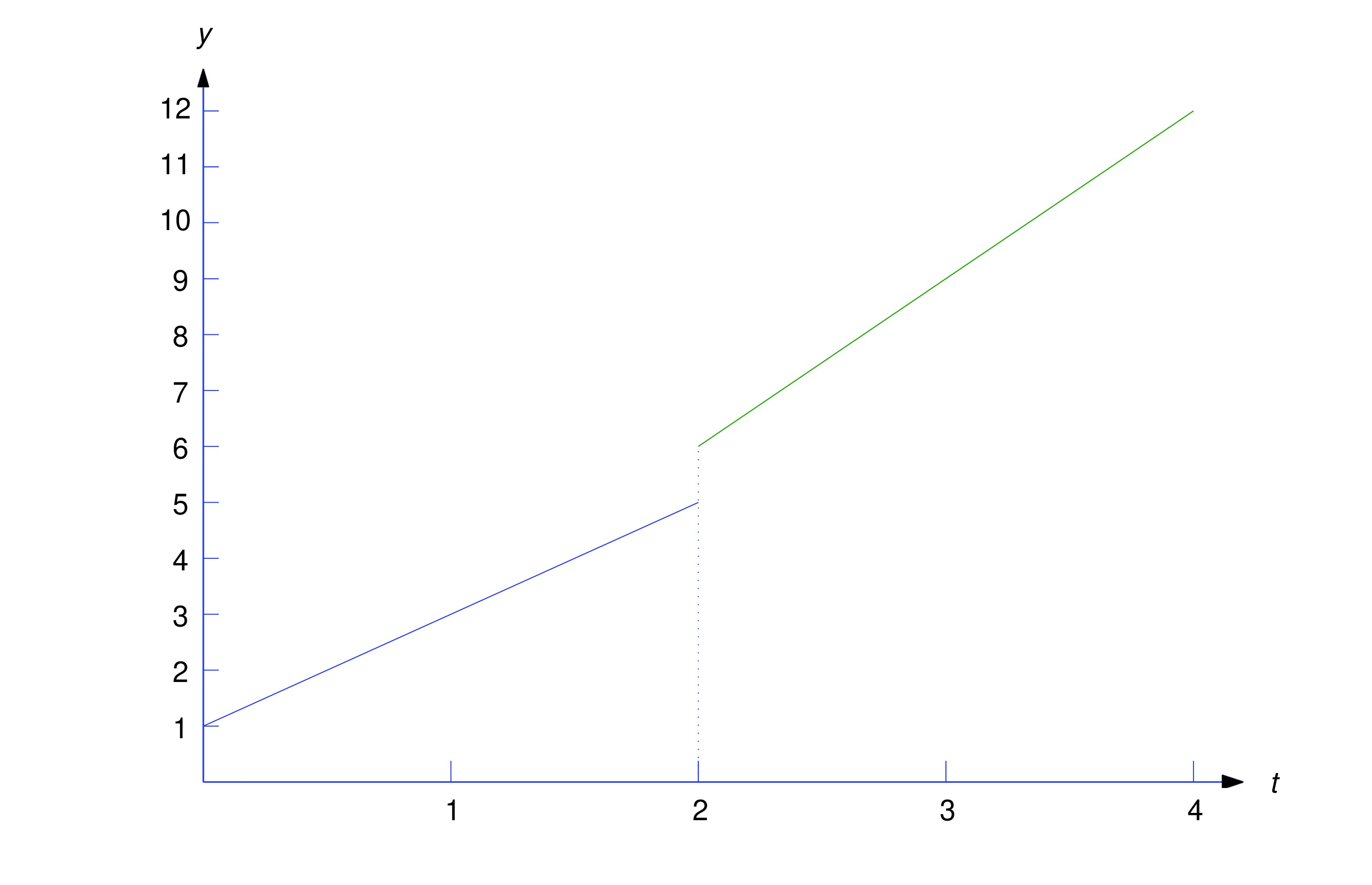
Laplace Transforms of Piecewise Continuous Functions
We’ll now develop the method of Example example:8.4.1 into a systematic way to find the Laplace transform of a piecewise continuous function. It is convenient to introduce the unit step function, defined as
Thus, “steps” from the constant value to the constant value at . If we replace by in (eq:8.4.4), then that is, the step now occurs at (See figure below)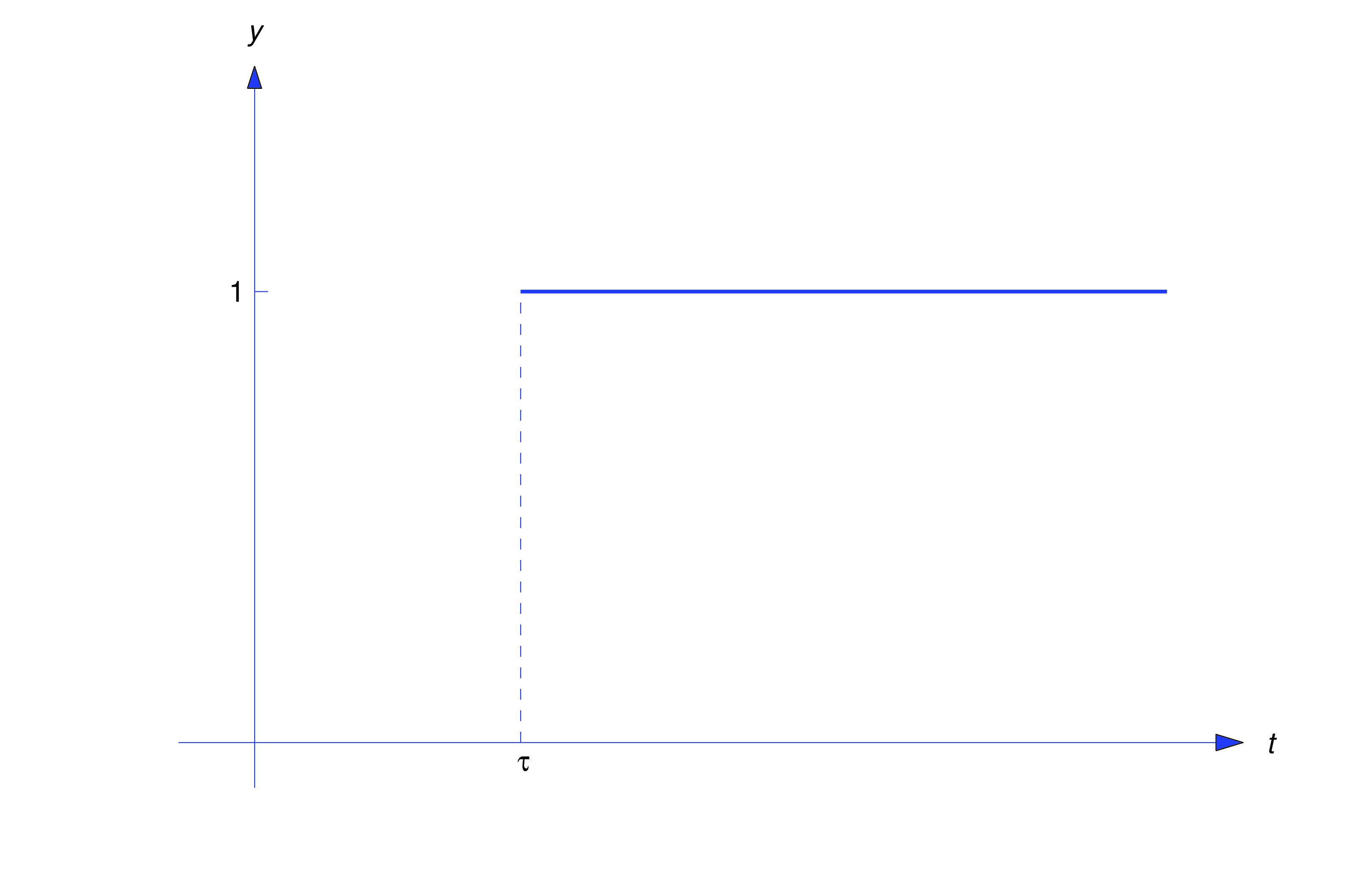
The step function enables us to represent piecewise continuous functions conveniently. For example, consider the function
where we assume that and are defined on , even though they equal only on the indicated intervals. This assumption enables us to rewrite (eq:8.4.5) as To verify this, note that if then and (eq:8.4.6) becomes If then and (eq:8.4.6) becomesWe need the next theorem to show how (eq:8.4.6) can be used to find .
- Proof
- By definition, From this and the definition of , The first integral on the right equals zero. Introducing the new variable of integration in the second integral yields Changing the name of the variable of integration in the last integral from to yields
Formula (eq:8.4.6) can be extended to more general piecewise continuous functions. For example, we can write as if , , and are all defined on .
The trigonometric identities
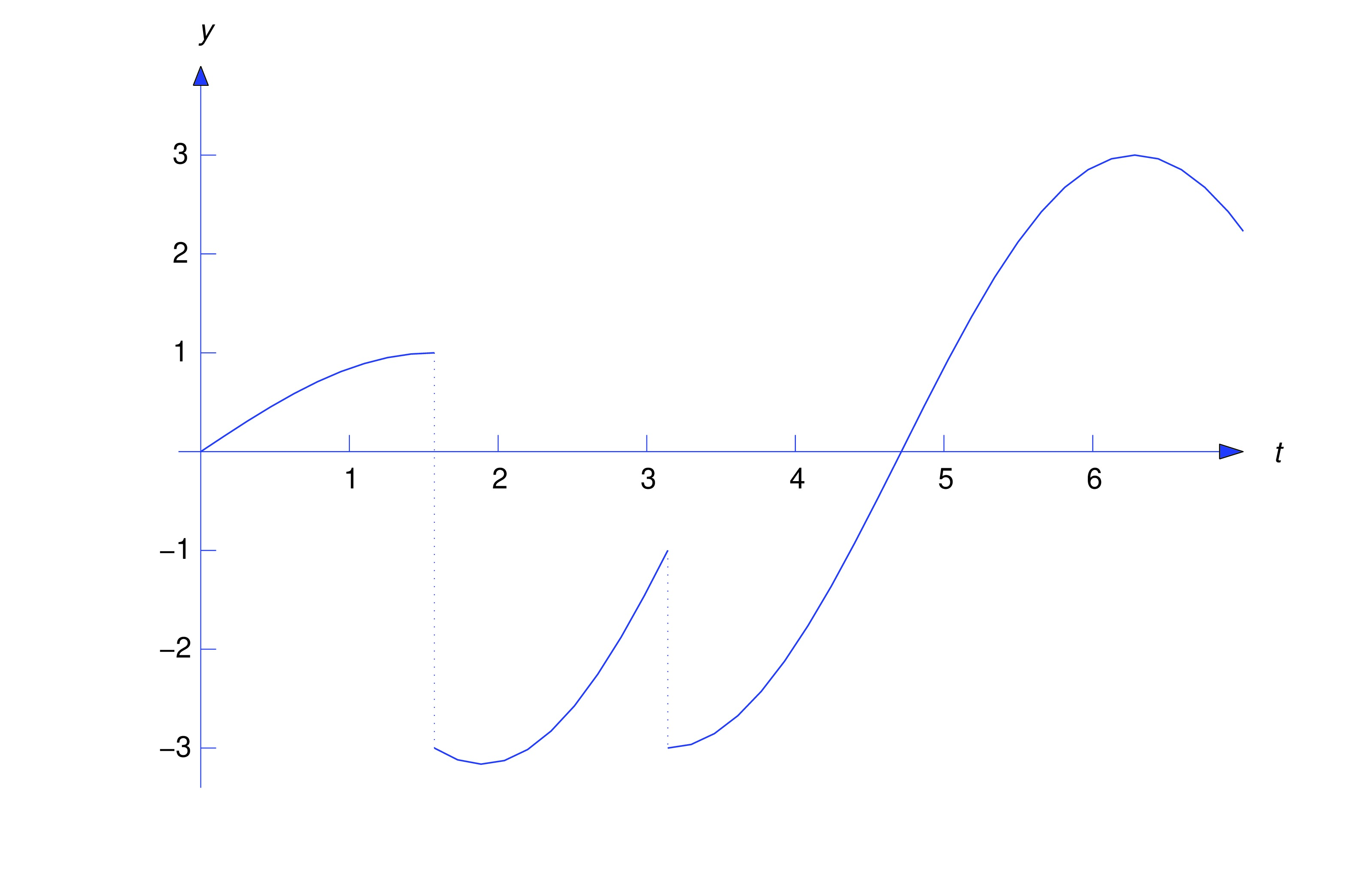
The Second Shifting Theorem
Replacing by in Theorem thmtype:8.4.1 yields the next theorem.
Text Source
Trench, William F., ”Elementary Differential Equations” (2013). Faculty Authored and Edited Books & CDs. 8. (CC-BY-NC-SA)
